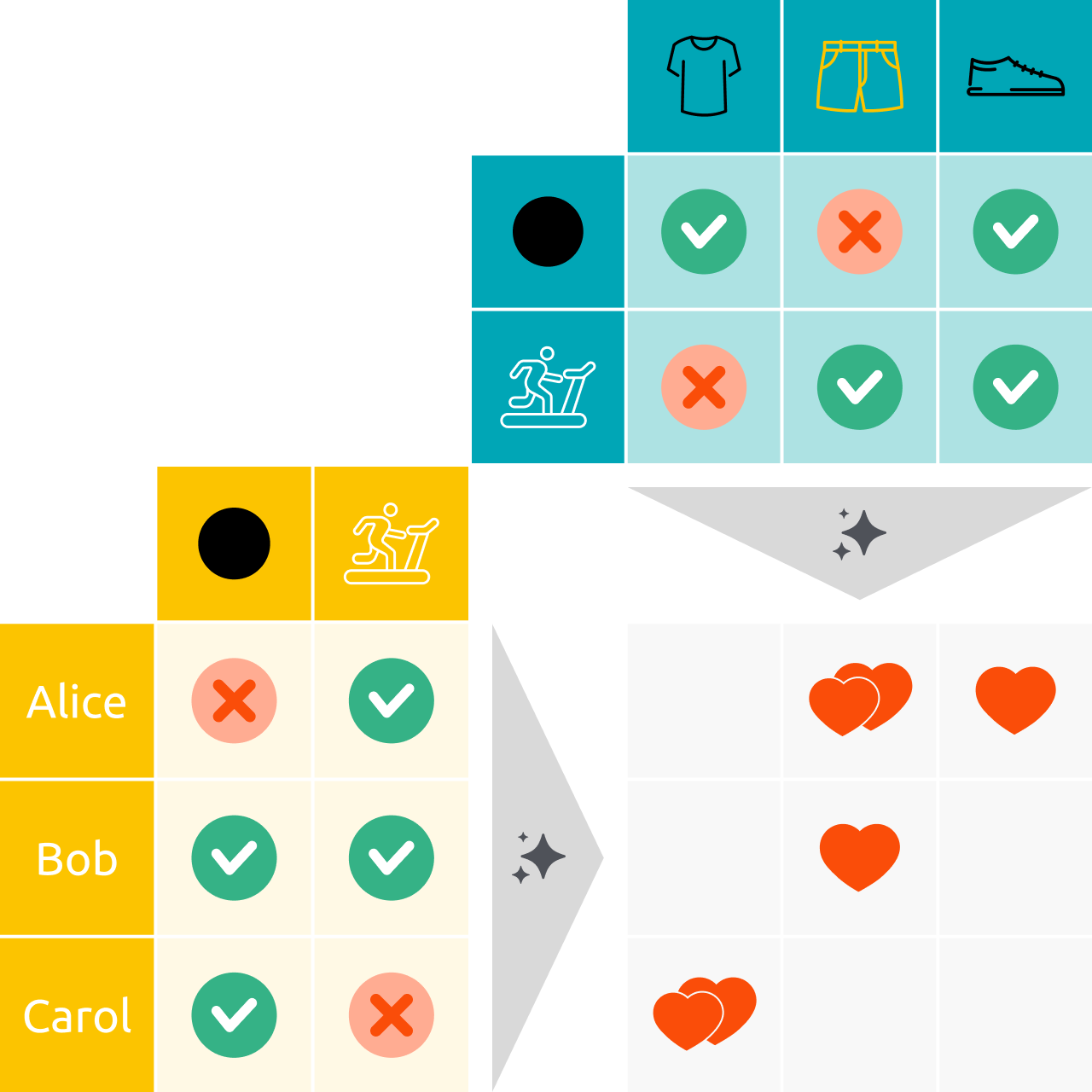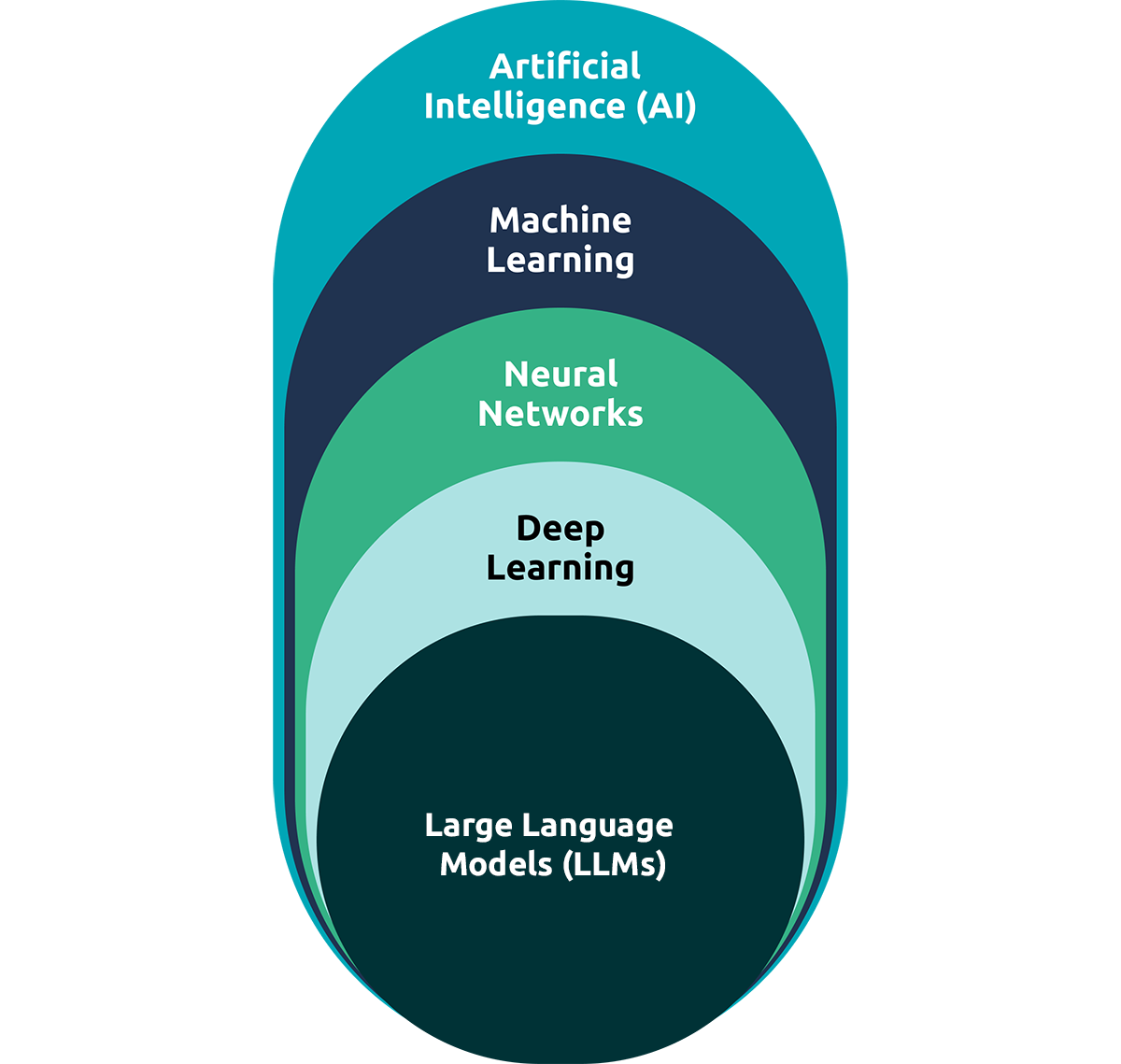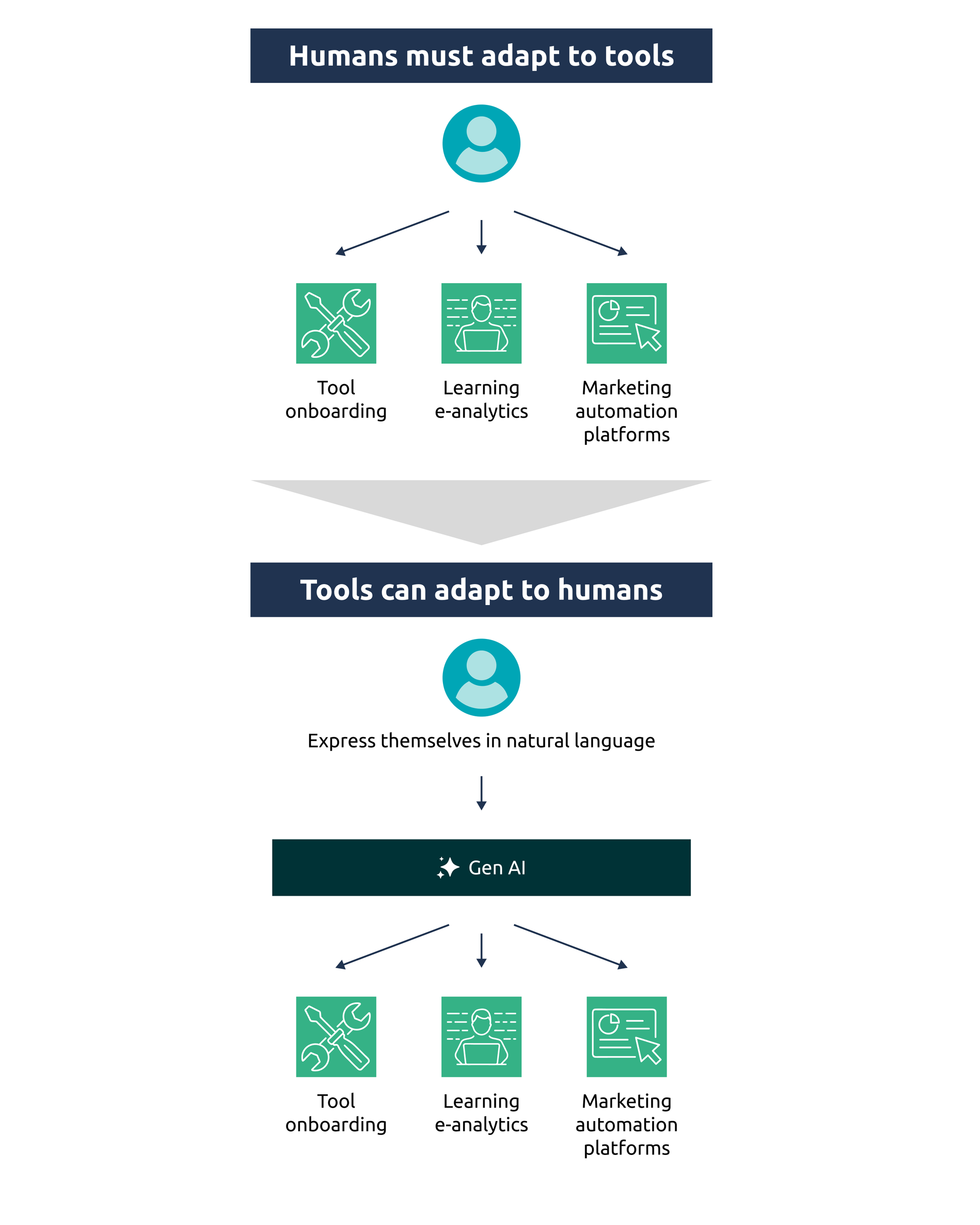Artificial Intelligence (AI) has become a constant presence in public discourse, impacting our work and daily lives. The recent surge in tools like ChatGPT has brought terms such as Generative AI (GenAI), LLMs (Large Language Models), and Machine Learning into daily conversation. But what do these terms actually mean? Let’s break down the basics together!
AI, Machine Learning, Deep Learning, Generative AI: Understanding the Core Definitions
Let's define key AI terms together to better understand its transformative power
What is AI?
In simple terms, Artificial Intelligence (AI) refers to a number of practices aimed at designing programs capable of performing tasks autonomously that are typically done by humans. It’s a broad term encompassing many different realities, from following explicit rules given to a machine (like non-player characters in video games, whose behaviors are programmed with predefined patterns) to generating content (what we call Generative AI, which is discussed later in this article). We can identify several levels and use a concrete example to illustrate these different levels – imagine building an AI for product recommendations:
- Symbolic AI: business decision rules based on expert knowledge. The person setting up the algorithm chooses which products to display to the user based on their business knowledge, defining explicit rules in the form of a decision tree.
For example: “If the user is between 25 and 40 years old and made a purchase in the last 2 weeks, recommend product X.” - Data-Driven AI: decisions and optimizations based on data analysis. Analyzing customer data helps find correlations between some criteria (demographic or behavioral) and purchased products. This allows the decision tree to be fed with objective data, going beyond human judgment.
For example: “Users who bought product X often buy product Y → Bob bought product X, recommend product Y to him.” - Predictive AI (Machine Learning): automated optimisation and prediction based on algorithms learning from data. The algorithm learns, for each user, which product is most likely to interest them given the rich information available. Unlike fixed decision trees, these models combine a vast number of criteria and data to reveal behavioral patterns invisible to the human eye.
For example, as shown in the diagram below: We build a matrix that contains all user interactions with different products. Based on his past interactions, seeing that Bob likes the color black and running-related products, the AI can predict that he is highly likely to like and purchase black running shoes.
Representation of a Predictive AI Model

What is Machine Learning?
As we’ve just seen, AI encompasses a wide range of algorithms with varying levels of sophistication.
A sub-category of Artificial Intelligence, Machine Learning involves leveraging data (often in large or very large quantities) through mathematical models and the computational power of machines to train models. The goal is to detect underlying patterns in the data to then use them for various purposes, such as predicting behavior. Simply put, if the machine can identify the reason behind the distribution of the data it analyzes, it can “guess” how data it hasn’t seen will be distributed.
Machine learning methods have long been used in diverse fields: detecting fraudulent financial transactions in the banking sector, autonomous cars, programs playing chess or Go (AlphaGo), and aiding diagnosis in medical imaging.
Within Machine Learning, Deep Learning comprises powerful models whose structure and versatility allow them to perform many different tasks. They are based on a specific modeling called neural networks, named in reference to biological neural networks. This modeling makes them particularly effective for certain tasks, such as image analysis.
Here’s a visual summary of AI’s subcategories:
Visual Overview of AI Subcategories
Legend:
- Artificial Intelligence (AI)
A set of theories and techniques used to create machines capable of performing tasks usually carried out by humans. - Machine Learning
Statistical algorithms and models that enable computers to perform tasks without being explicitly programmed to do so, but by “learning” from data.
The learning process can be supervised (when the model is trained on labeled data), unsupervised (when the model finds patterns in unlabeled data), or reinforcement (when the model learns by trial and error to achieve a certain goal). - Neural Networks
Typology of machine learning algorithms based on a basic unit called a “neuron” (in reference to biological neural networks) or node that can be activated or deactivated according to the input signal. Neurons are organized in layers: an input layer, one or more hidden layers and an output layer. Each node in a layer is connected to every node in the next layer, with these connections having different “weights”. These weights are adjusted during the learning process to improve the network’s predictions or decisions. - Deep Learning
A set of models based on neural networks with more than 3 layers, enabling them to “understand” and generate much more complex elements.

Where does Generative AI fit in?
AI, as a field of research and application, is far from new. It has gained widespread popularity recently through Generative AI (often referred to as GenAI), which has seen considerable growth due to technical advancements and significant success with tools like ChatGPT, Midjourney, and many others.
Specifically, Generative AI is a type of AI system capable, as its name suggests, of generating text, images, videos, or other media in response to prompts. It’s an application of AI focused on content creation and understanding natural language requests.
Why does GenAI seem so revolutionary?
- Generative AI unlocks numerous opportunities for AI use, so we shouldn’t underestimate it or dismiss it as merely a gadget or a passing trend.
- Language models understand natural language queries, which completely changes the human-machine interface paradigm: you no longer need to be an expert in Excel formulas or specialized software to get concrete and relevant results.
Paradigm Shift: AI at the Service of the User
On the practical side, a key element sets today’s GenAI tools apart: they are already pre-trained, which means that they are ready-to-use, without need to be fed additional data.

When we talk about AI, what are we really referring to?
As we’ve seen, AI can have many definitions, but it’s generally used to describe algorithms that require “learning” or “training” on data.
However, through metonymy, the term “AI” is now often used synonymously with “Generative AI”. Even though we’ve just seen that the two concepts aren’t equivalent, the recent advancements in Generative AI have made very complex models accessible to everyone. This ease of access often leads to the two being confused in public discourse, as the AI tools used by the general public are typically Generative AIs.
Will Generative AI replace all other forms of AI?
No: the key is to match the need to the tool, by finding the right type of AI that can address the problem at hand, or even combining several complementary AI approaches.
In summary, Generative AI will transform some of our uses, but:
- While an amazing tool, it’s not magical. It doesn’t solve every problem, and its impact is far from being environmentally neutral.
- It’s important to use the right AI model for the right purpose (automation, performance gains, relevance, etc.) that respects imposed constraints (computation time, cost, etc.). There’s no need to ask a Generative AI model for a question whose answer can be found with a simple Google search!
